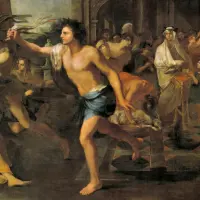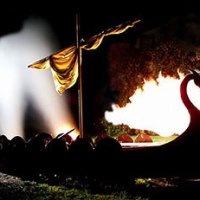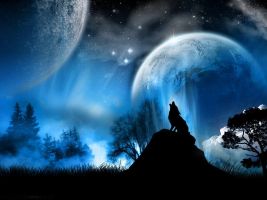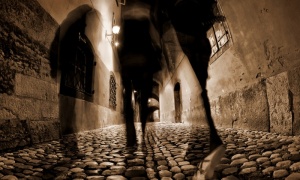The immense, mountain-sized rock called Uluru, some 1,300 feet in height and with an enormously broad base, occupies a prominent place in the central Australian landscape. Visible from far away, Uluru (or Ayers Rock) dominates the surrounding territory and is the most sacred site of many Aboriginal peoples. At this holy place, potent crossing point of countless dreaming tracks and song lines (the paths connecting sacred sites), legends say that two snake peoples once fought for supremacy during the Dreamtime (the age of the world’s dawn) and the rock itself still bears witness to their epic struggle. The area around the formation is home to an abundance of springs, waterholes, rock caves and ancient paintings. Uluru is sacred to the Aboriginal people who live in this varied landscape, the Pitjantjatjara Anangu. According to the Anangu, the world was once a featureless place. None of the places we know existed until creator beings, in the forms of people, plants and animals, traveled widely across the land. Then, in a process of creation and destruction, they formed the landscape as we know it today. Aṉangu land is still inhabited by the spirits of dozens of these ancestral creator beings which are referred to as Tjukuritja or Waparitja.
Constantly changing in the light, magical Uluru seems to heave with kaleidoscopic life. It is not hard to imagine it as the hub of a continent-wide network of dreaming tracks and comes as no surprise to learn that it is full of djang (the creative energy by which the world was formed originally); nor, come to that, is it difficult to visualise the place as it mythically started – a mass of serpents fighting in the sand. The Kuniya, or rock-python people, once lived in the desert alongside the Woma, their serpent friends and allies. The Kuniya, however, were restless and questing souls, ever anxious to venture further afield. Their forays took them in the direction of Uluru, although it did not then exist as we know it today, being just another part of the desert’s open plain. The Kuniya found it fruitful and liked it so much that they decided to build a new life here. Holding a farewell feast with the Woma, they vowed their enduring loyalty and friendship before striking off for their new home. There they lived contentedly, enjoying the bounty of this rich land – but their idyll was not destined to last long.
One day a tribe of venomous Liru – the deadly carpet-snake – suddenly swept down on the Kuniya camp. A desperate battle began which raged for many hours, and during the seismic upheavals of the conflict, the great rock was born. Marks on its surfaces are said to have been left by weapons or fallen combatants. Some time after, the Woma decided to pay their old friends a visit. Yet drawing near, and seeing the fate that had befallen their former neighbours, they were quite overcome with grief: they took on snake form, never to return as men. Born in massacre and shaped in scars, Uluru’s appearance marked the end of the creative Dreamtime. At this epoch-making moment the world’s creation ceased: from then on the world would be as it was, for better or worse.
When the sun starts sinking in the sky the rock transforms as the light works on its hues and coloration, giving the observer an inkling of why this is the most sacred site in the Aborigines’ world. The local Aṉangu do not climb Uluru because of its great spiritual significance. They have also for many years requested that visitors do not climb the rock, partly due to the path crossing a sacred traditional Dreamtime track, and also due to a sense of responsibility for the safety of visitors. Unfortunately these requests have on occasion been ignored with fatal consequences. Several controversial incidents on top of Uluru in 2010, including a striptease, golfing and nudity, led to renewed calls for banning the climb. On 1 November 2017, the Uluṟu–Kata Tjuṯa National Park board voted unanimously to prohibit climbing Uluru, with the ban to take effect in October 2019. I have a feeling that the spirits would approve…
















Leave a comment